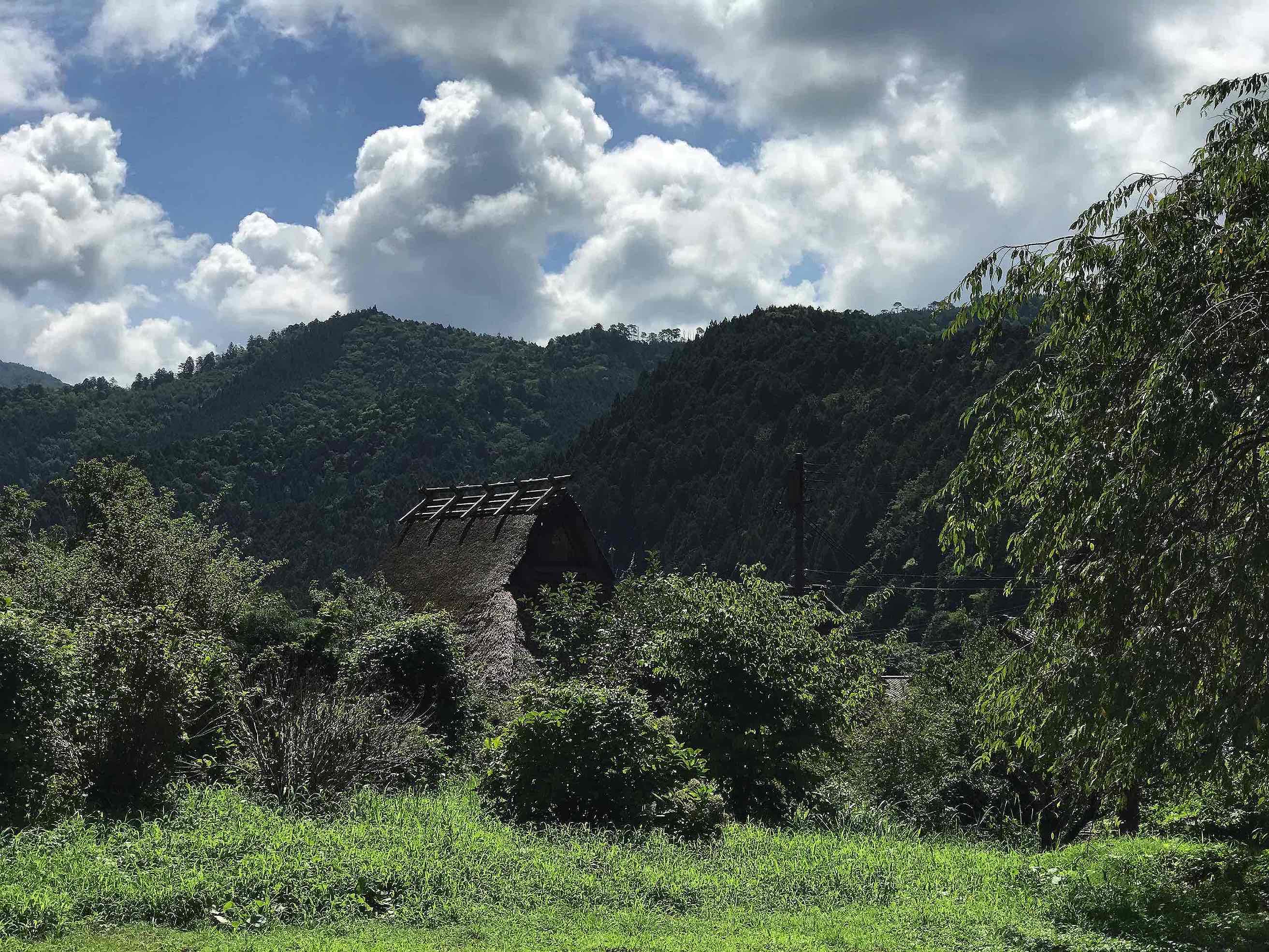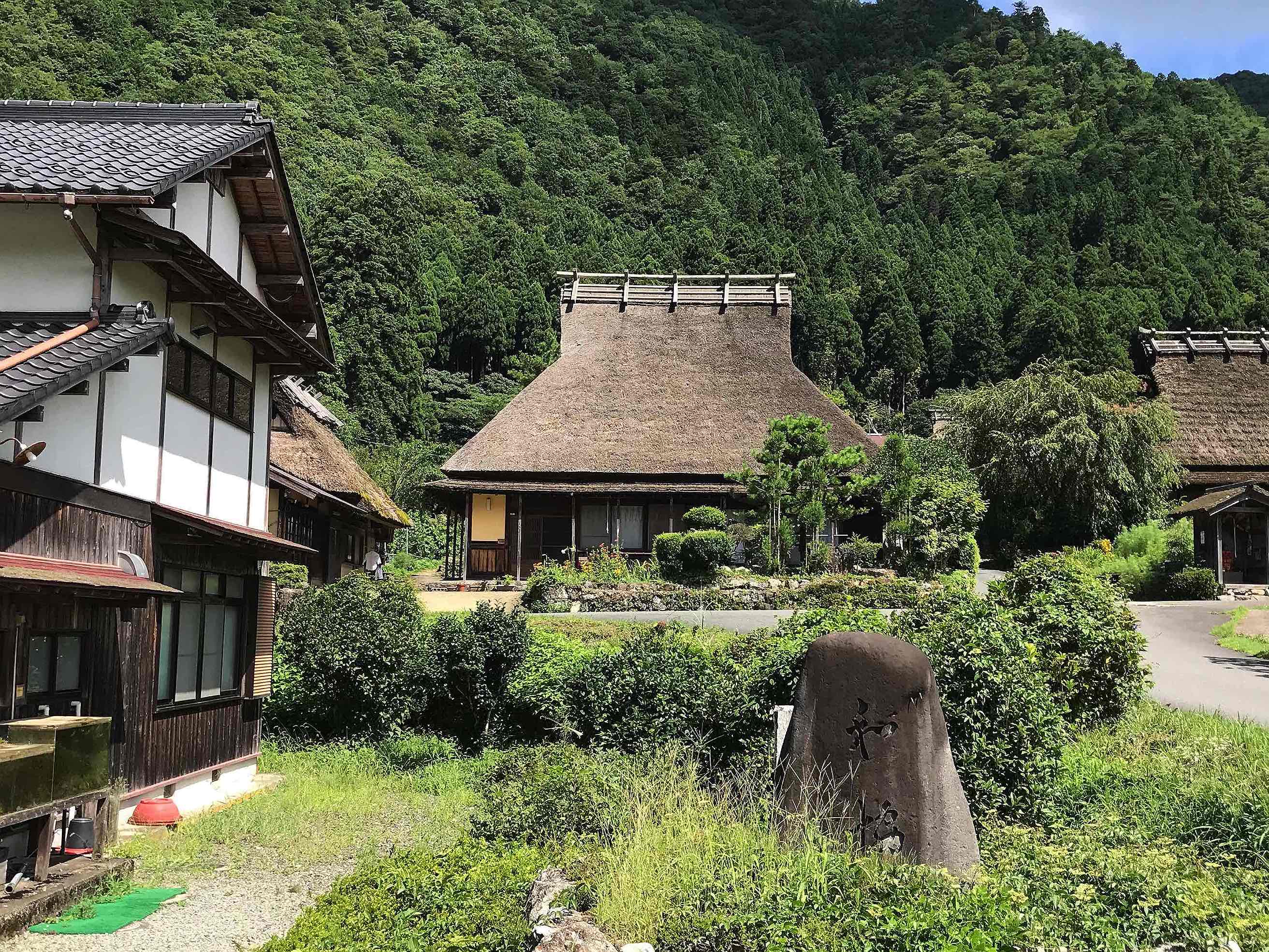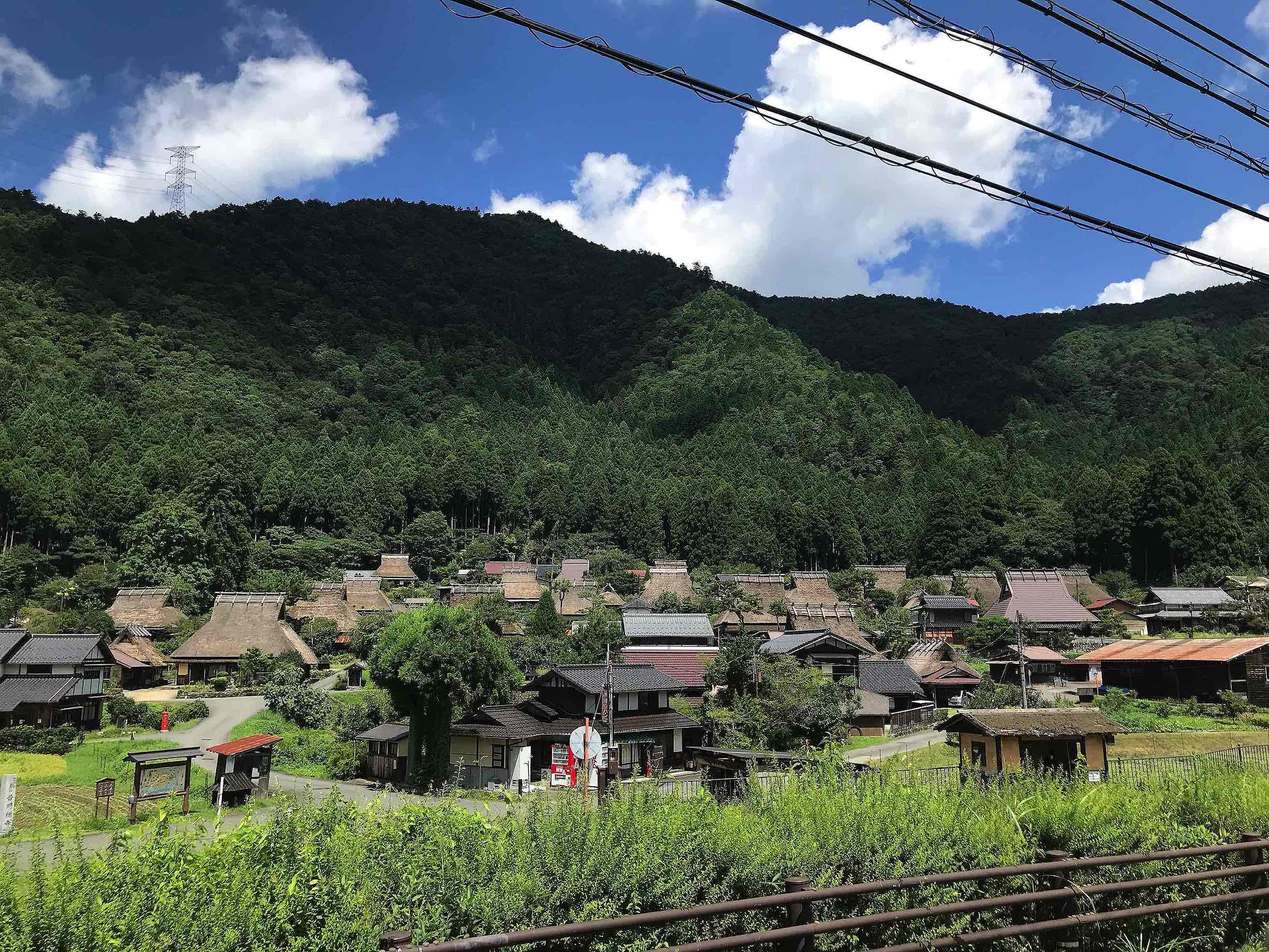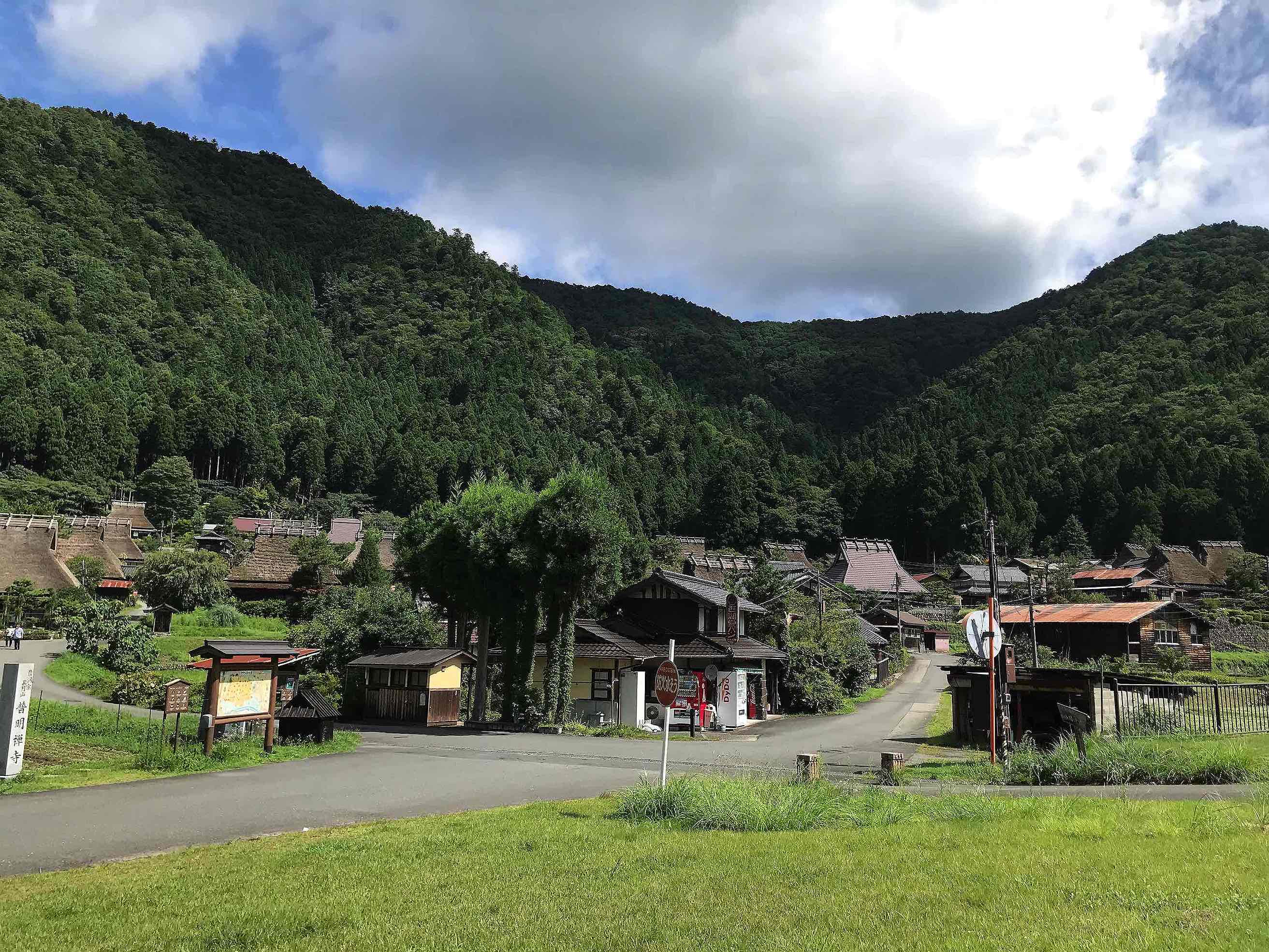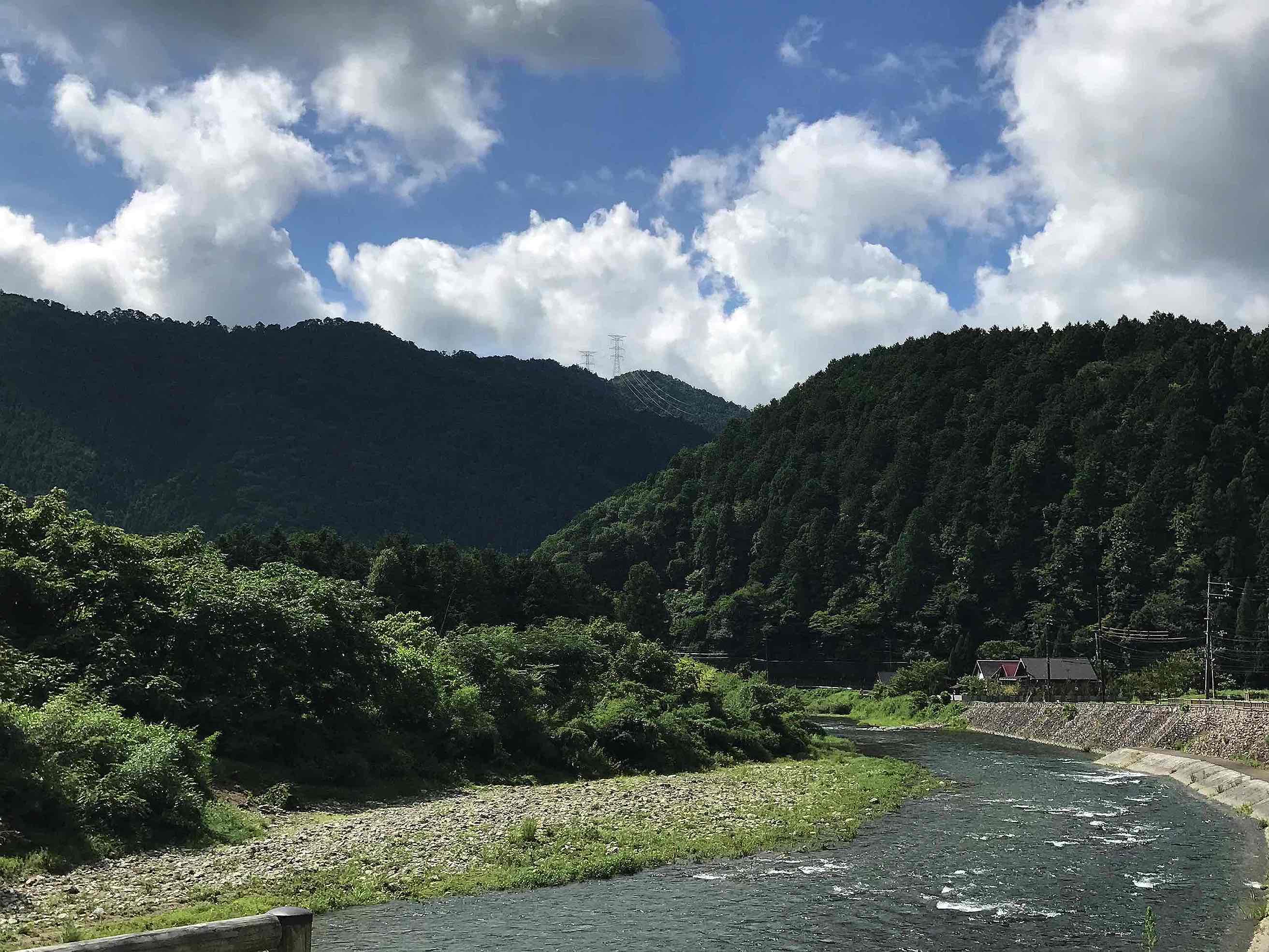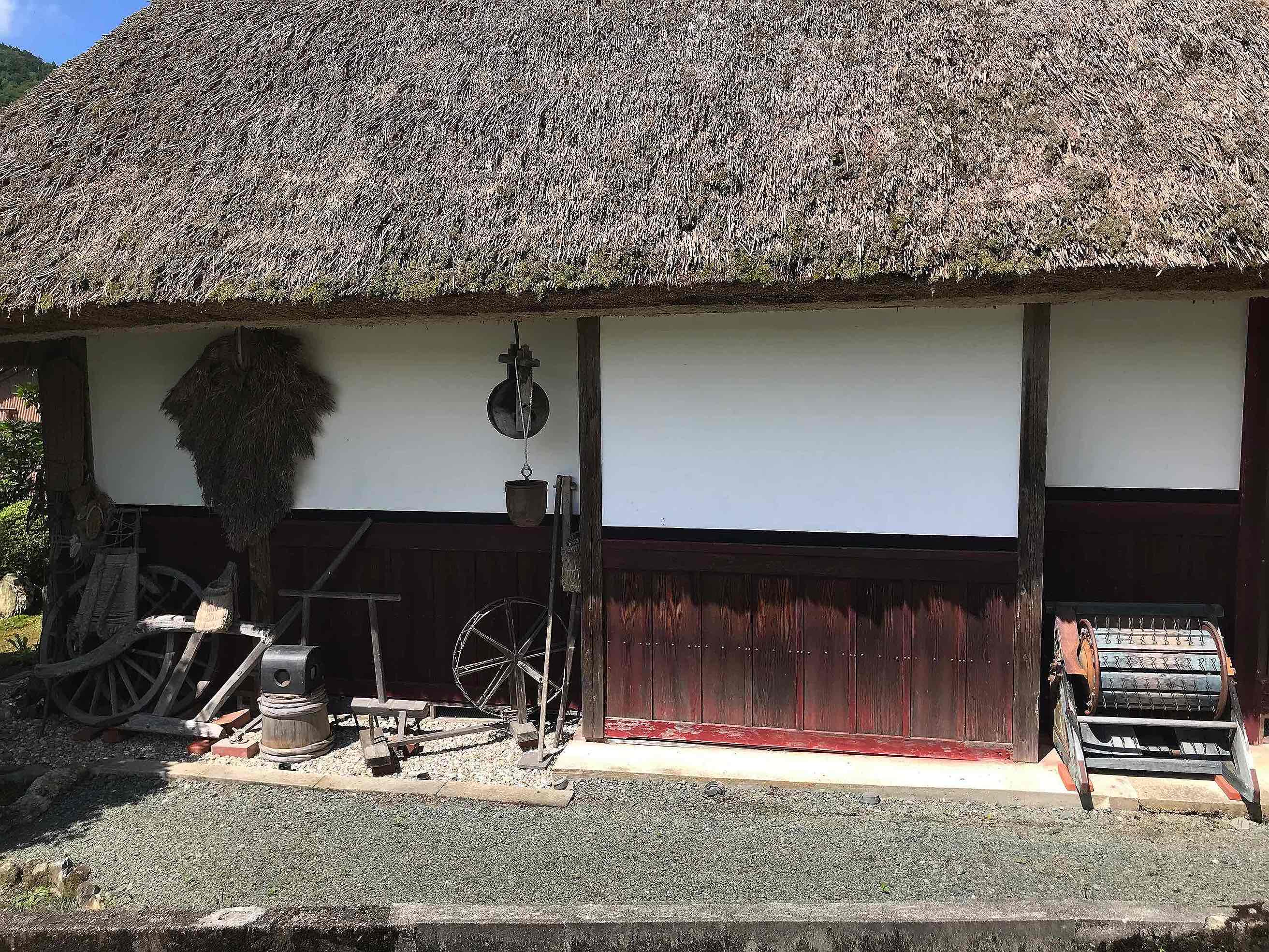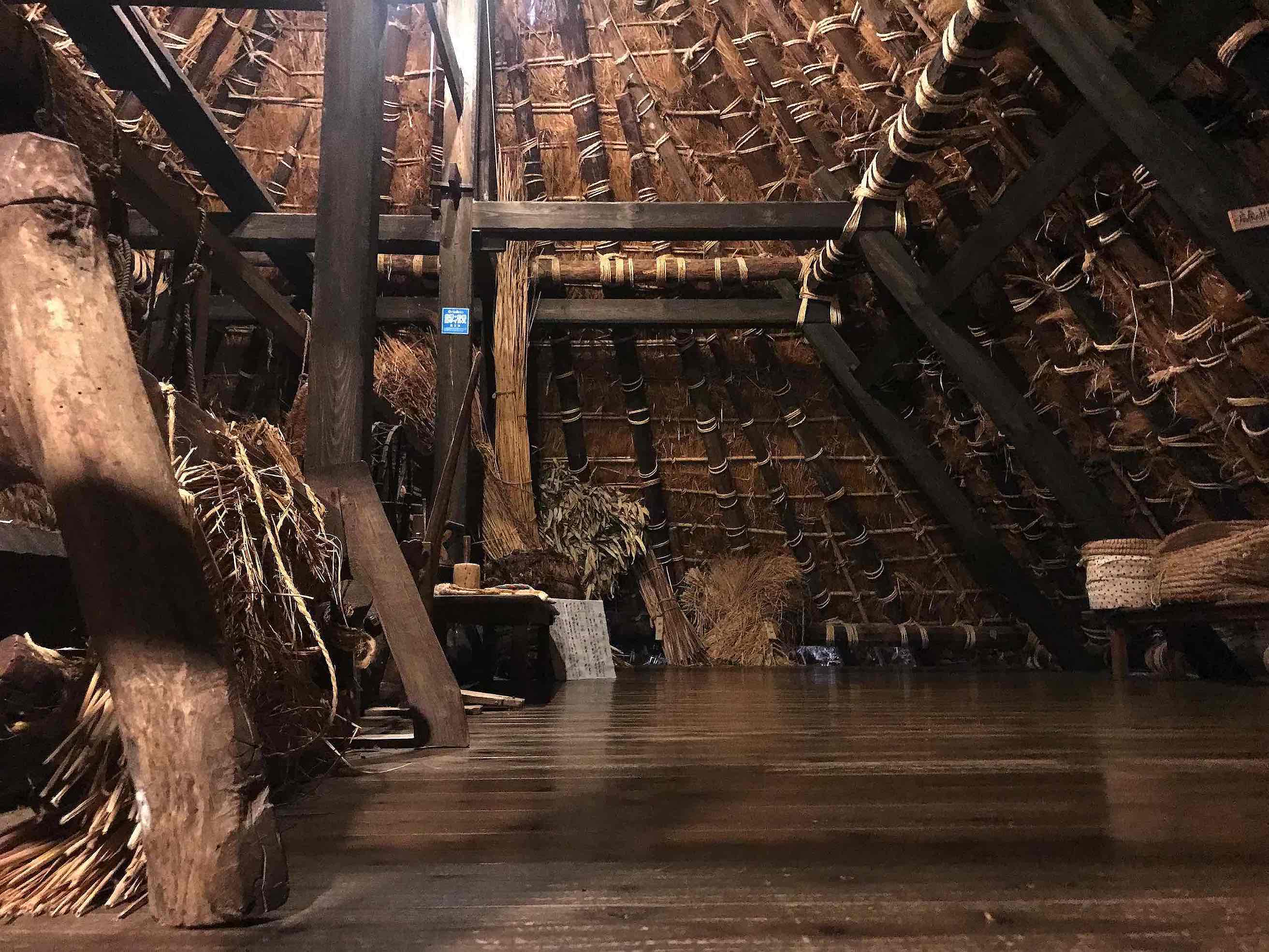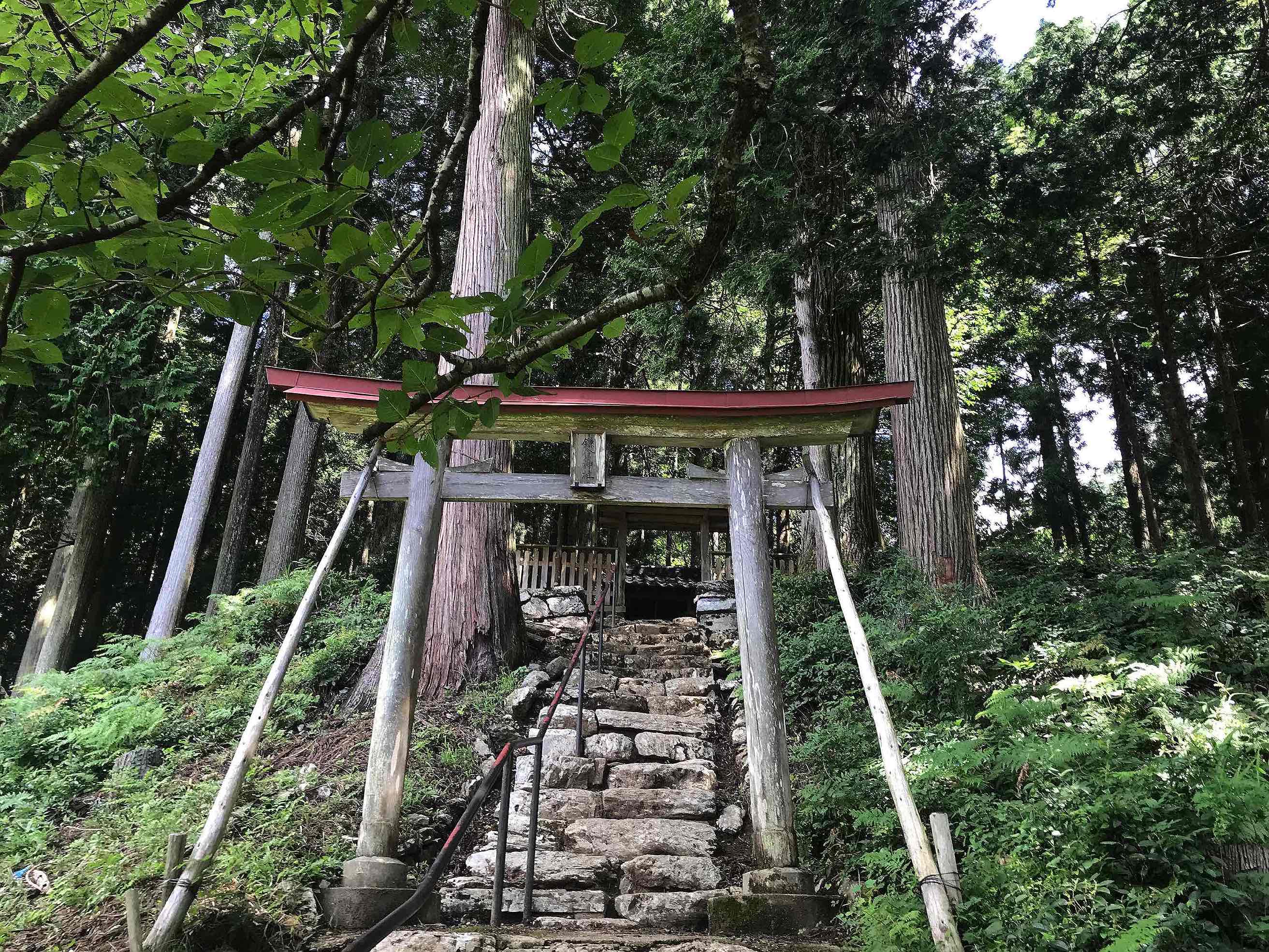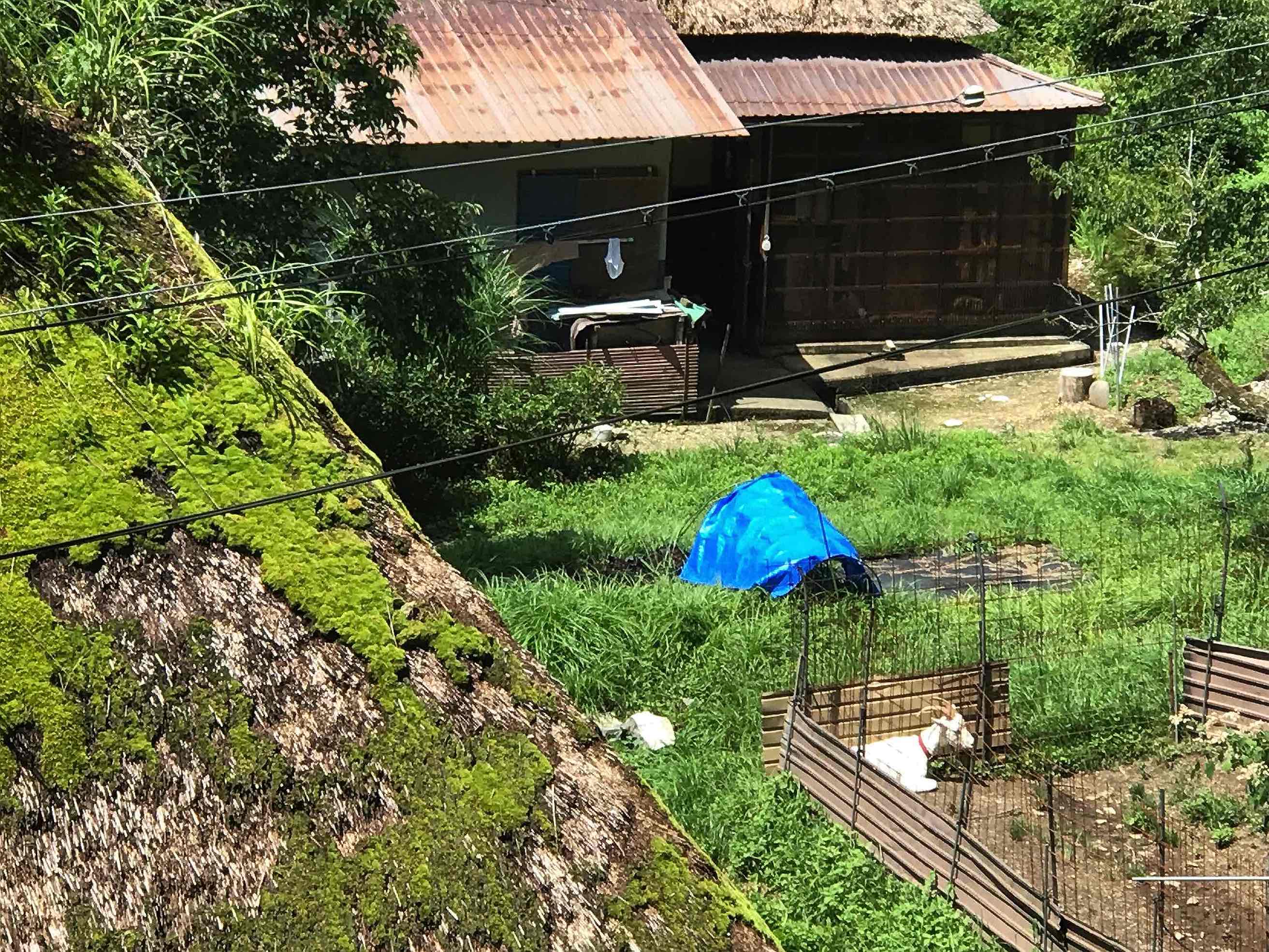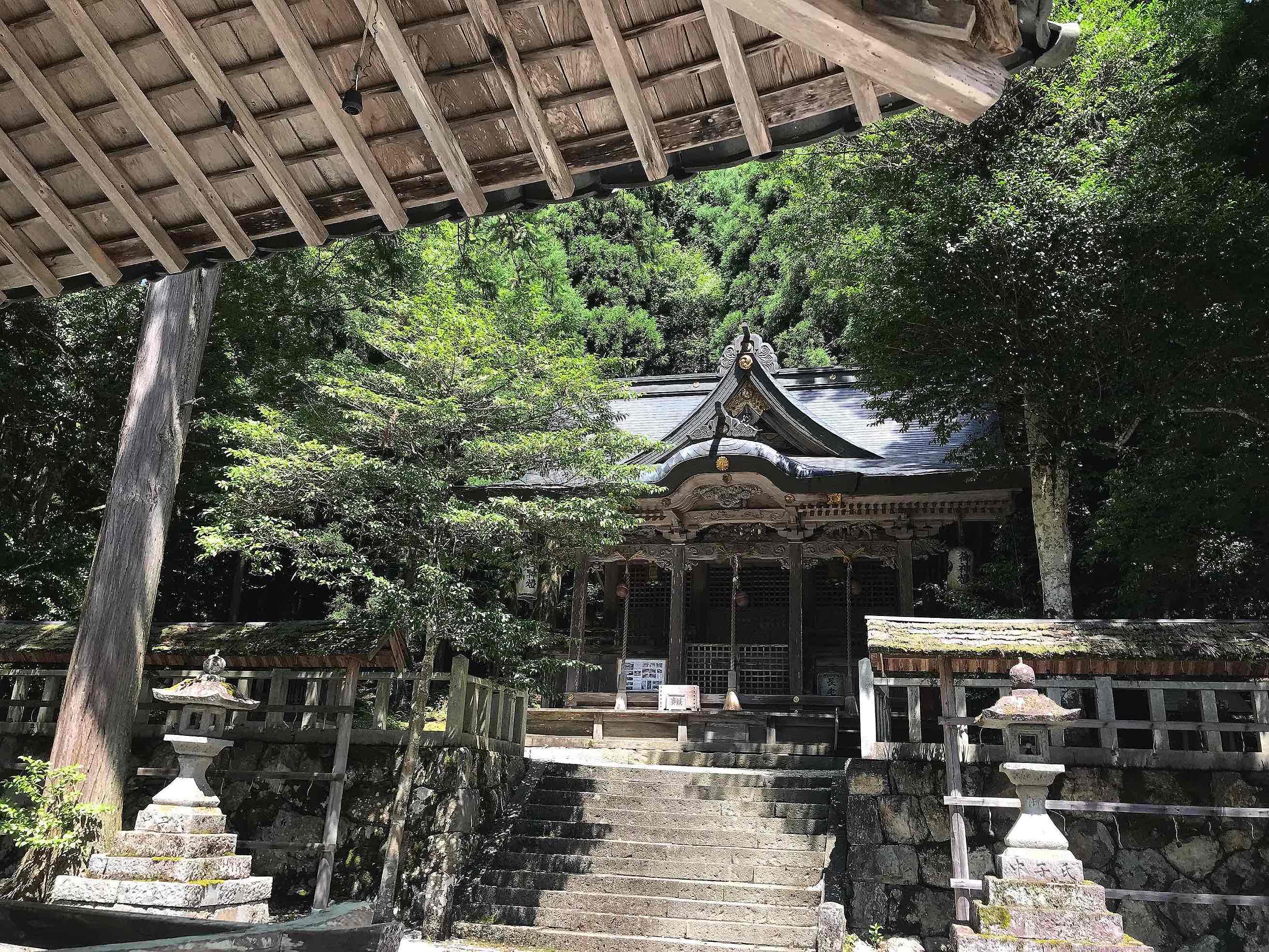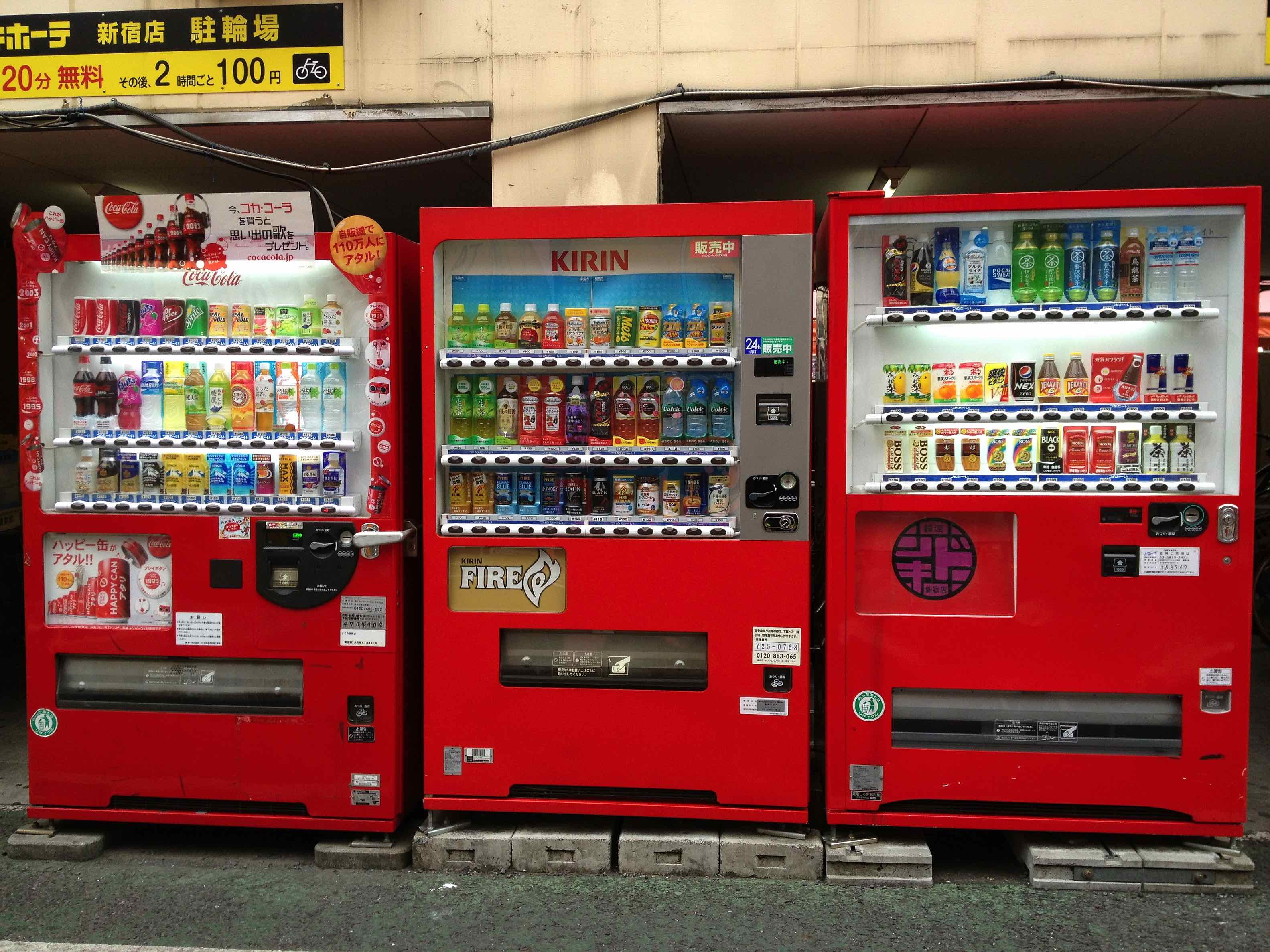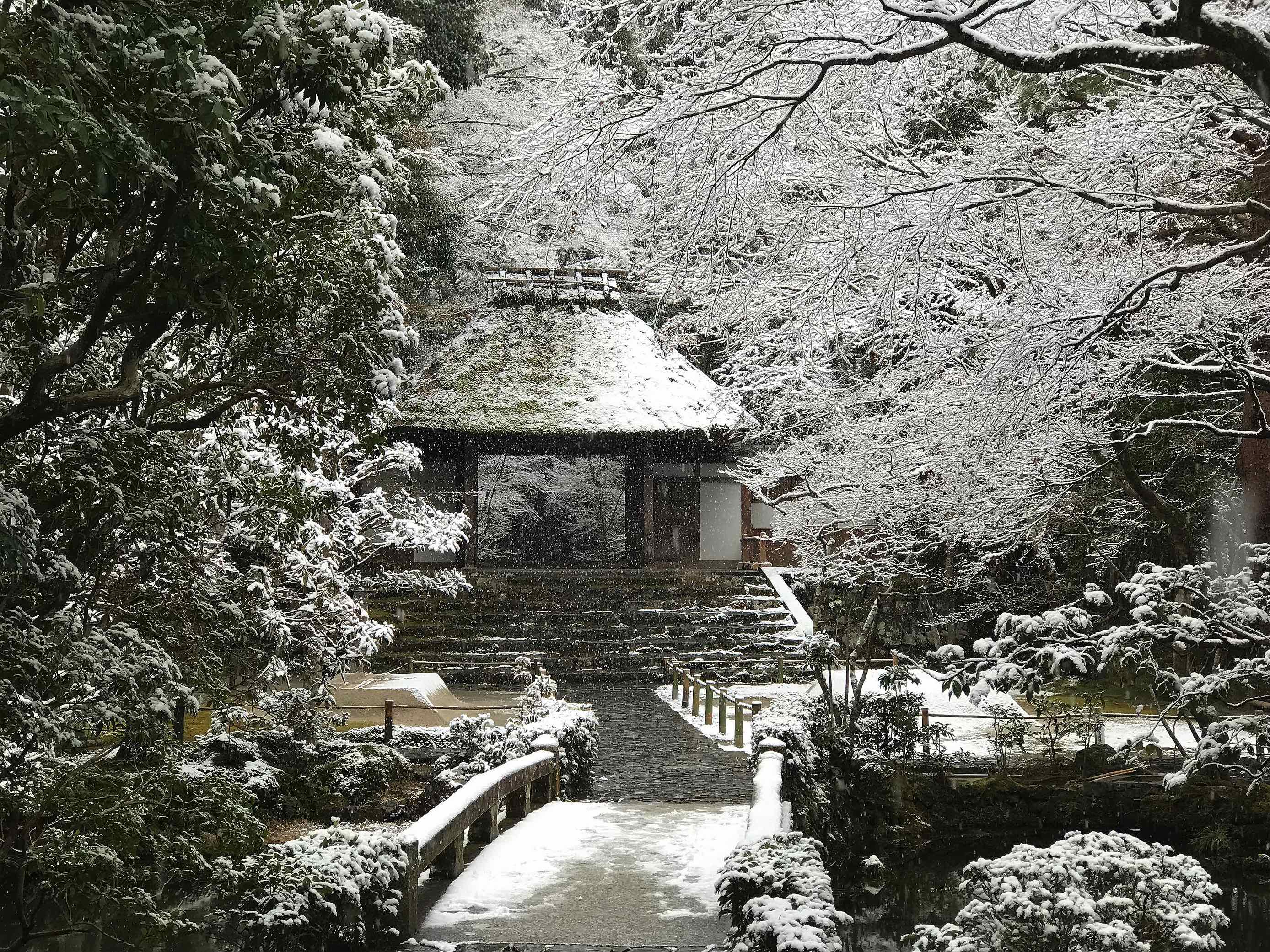Just a reminder: The future of LiA is very much in doubt, and it’s up to you to decide what happens next. Thank you for all your support!
What village in Japan has the highest concentration of thatched-roof houses? Shirakawa-go, or maybe Gokayama? Those would be popular guesses, but the answer might surprise you. It’s Kayabuki-no-Sato, a small hamlet nestled in the town of Miyama, 30 kilometers from downtown Kyoto. I visited Miyama a few days ago, desperate to escape the summer heat and taking advantage of a rare rainless day. It was still hot (Kauyabuki-no-Sato sits at about 300 meters of elevation) but certainly less stifling than central Kyoto in August.
I’ve been wanting to visit Miyama for a long time, having avoided doing so because it’s fairly difficult to access without a car. In truth it really isn’t all that bad – about two hours by train and bus. And despite its proximity to a major international city, Miyama is far less touristy than Shirakawa-go. Like its more famous counterpart it has a number of hamlets with clusters of thatched-roof “gasshou zukuri” farmhouses, of which Kayabuki-no-Sato has the greatest number. A couple have been turned into folk museums and a couple more into minshuku, and there are a few cafes. But midweek at least, it was mercifully uncrowded.
Kayabuki-no-Sato isn’t nestled amongst high mountains like Shirakawa-go and Goayama, and perhaps lacks some of the attendant dramatic vistas as a result. Nevertheless it’s quite lovely, a relatively unspoiled relic of rural Japan that subsists mainly on farming rather than tourism. If you want to see a place with that vibe and Shirakawa-go is impossible, it makes a pretty good alternative and I highly recommend it.


